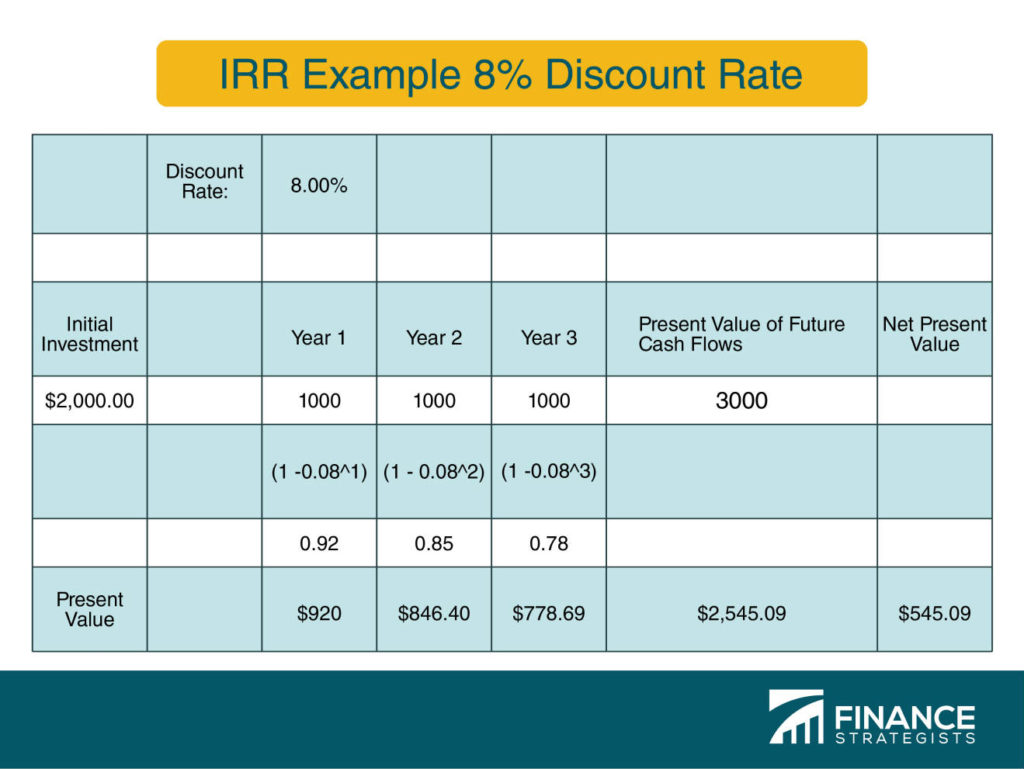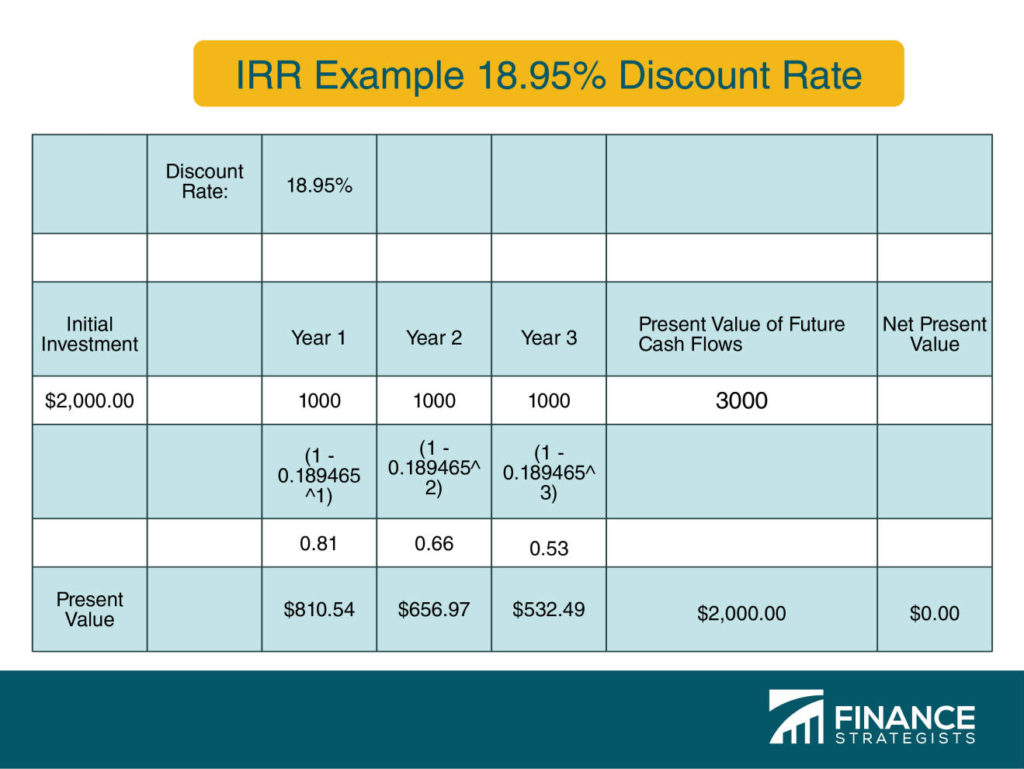Internal Rate of Return, or IRR, is the rate of return at which a project breaks even and is used by management to evaluate potential investments. IRR functions as a return on investment (ROI) calculation. To understand IRR, one must understand net present value (NPV). Net present value is calculated by discounting future cash flows by a discount rate, which is the rate a company expects to earn on investments. If a project offers $1,000 for 3 years, the present value of future cash flows is not worth $3,000 to the company because it has an expectation that its money should earn money over time. This concept is known as the "time value of money" (TVM). If a company invests $2,000 into a project which offers $1,000 for 3 years at an 8% discount rate, the present value of future cash flows is $2,545.09. After subtracting the initial investment, the net present value of the project is $545.09, suggesting this is a good investment at the current discount rate. The internal rate of return is the discount rate that would bring this project to breakeven, or $0 NPV. In this case, an internal rate of return of 18.95% brings the net present value of future cash flows to 0. A company's discount rate is typically derived from its cost of capital, or the cost a company pays investors in exchange for capital, either in interest from issued debt or through selling equity in the company. The weighted average cost of capital often functions as a company's "hurdle rate," or the minimum required rate of return. Because the IRR in our example exceeds the discount rate (or required rate of return), the IRR rule says that management should invest in this project. It's important to note that certain assumptions can cause the IRR to become overstated. For this reason, many investors use the Modified Internal Rate of Return, or MIRR, which account for these assumptions.What Is IRR (Internal Rate of Return)?
Foundations of IRR: Net Present Value (NPV)
How to Calculate IRR | Example
Calculating IRR | Case Study


IRR Calculation | Hurdle Rate
IRR Formula Limitations - Opting for the MIRR
Internal Rate of Return (IRR) FAQs
IRR is an acronym for Internal Rate of Return.
Internal Rate of Return, or IRR, is the rate of return at which a project breaks even and is used by management to evaluate potential investments.
IRR functions as a return on investment (ROI) calculation.
A company’s discount rate is typically derived from its cost of capital, or the cost a company pays investors in exchange for capital, either in interest from issued debt or through selling equity in the company.
It’s important to note that certain assumptions can cause the IRR to become overstated. For this reason, many investors use the Modified Internal Rate of Return, or MIRR, which accounts for these assumptions.
True Tamplin is a published author, public speaker, CEO of UpDigital, and founder of Finance Strategists.
True is a Certified Educator in Personal Finance (CEPF®), author of The Handy Financial Ratios Guide, a member of the Society for Advancing Business Editing and Writing, contributes to his financial education site, Finance Strategists, and has spoken to various financial communities such as the CFA Institute, as well as university students like his Alma mater, Biola University, where he received a bachelor of science in business and data analytics.
To learn more about True, visit his personal website or view his author profiles on Amazon, Nasdaq and Forbes.















